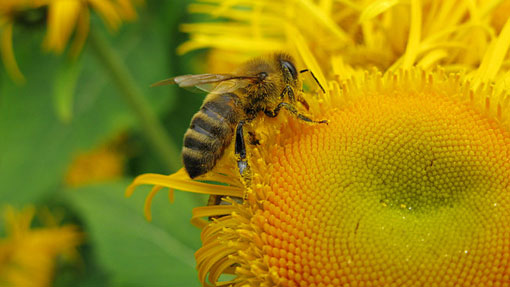
A report has identified more than a dozen features of the modern world, from air pollution to Asian hornets, combining to produce the dramatic decline in honeybee populations of recent years.
The complex cocktail of threats blamed for the death of honeybees in the study, carried out by the United Nations Environment Programme (UNEP), include the loss of wild flowers in intensively-farmed areas, the use of systemic insecticides and cross-infection of colonies through large-scale commercial beekeeping. No single factor emerged as the most damaging.
The report also warned that the collapse of honeybee colonies could be worsened by the predicted loss in coming decades of up to 20,000 flowering plant species on which bees depend for nectar.
‘The way humanity manages or mismanages its nature-based assets, including pollinators, will in part define our collective future in the 21st century,’ said UNEP executive director Achim Steiner. ‘The fact is that of the 100 crop species that provide 90% of the world’s food, over 70 are pollinated by bees.’
Concerns about the loss of honeybee populations have been growing for over a decade as Europe and particularly the United States have recorded colony collapses and bee numbers falling by up to 50% each year. Beekeepers in Japan and China have now also begun reporting high levels of honeybee losses.
The report calls for more care in the choice, timing and application of insecticides and other chemicals, and says farmers and landowners should be offered incentives to include pollinator-friendly wildflowers next to crop fields.





